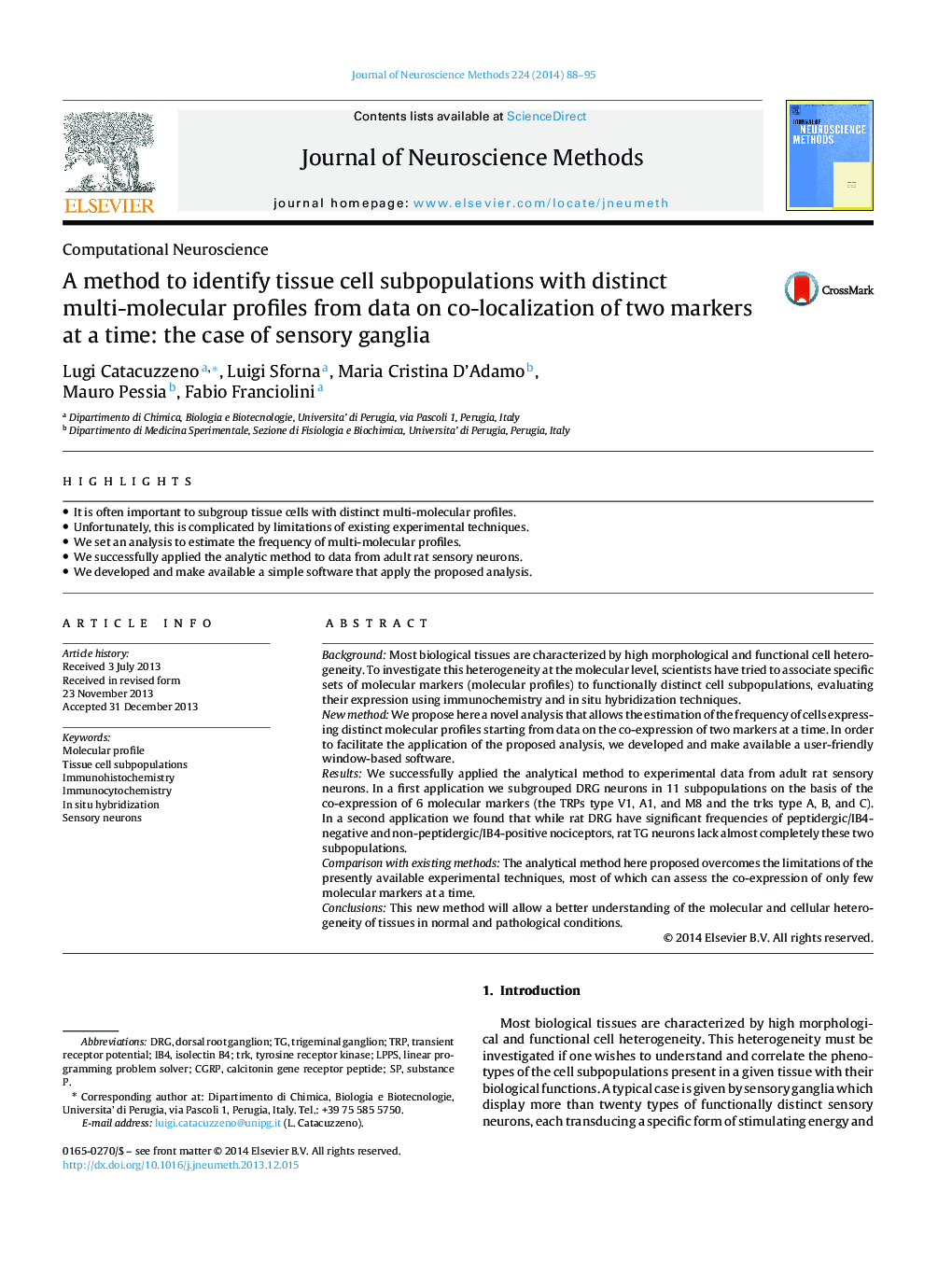| Article ID | Journal | Published Year | Pages | File Type |
|---|---|---|---|---|
| 6268734 | Journal of Neuroscience Methods | 2014 | 8 Pages |
â¢It is often important to subgroup tissue cells with distinct multi-molecular profiles.â¢Unfortunately, this is complicated by limitations of existing experimental techniques.â¢We set an analysis to estimate the frequency of multi-molecular profiles.â¢We successfully applied the analytic method to data from adult rat sensory neurons.â¢We developed and make available a simple software that apply the proposed analysis.
BackgroundMost biological tissues are characterized by high morphological and functional cell heterogeneity. To investigate this heterogeneity at the molecular level, scientists have tried to associate specific sets of molecular markers (molecular profiles) to functionally distinct cell subpopulations, evaluating their expression using immunochemistry and in situ hybridization techniques.New methodWe propose here a novel analysis that allows the estimation of the frequency of cells expressing distinct molecular profiles starting from data on the co-expression of two markers at a time. In order to facilitate the application of the proposed analysis, we developed and make available a user-friendly window-based software.ResultsWe successfully applied the analytical method to experimental data from adult rat sensory neurons. In a first application we subgrouped DRG neurons in 11 subpopulations on the basis of the co-expression of 6 molecular markers (the TRPs type V1, A1, and M8 and the trks type A, B, and C). In a second application we found that while rat DRG have significant frequencies of peptidergic/IB4-negative and non-peptidergic/IB4-positive nociceptors, rat TG neurons lack almost completely these two subpopulations.Comparison with existing methodsThe analytical method here proposed overcomes the limitations of the presently available experimental techniques, most of which can assess the co-expression of only few molecular markers at a time.ConclusionsThis new method will allow a better understanding of the molecular and cellular heterogeneity of tissues in normal and pathological conditions.
